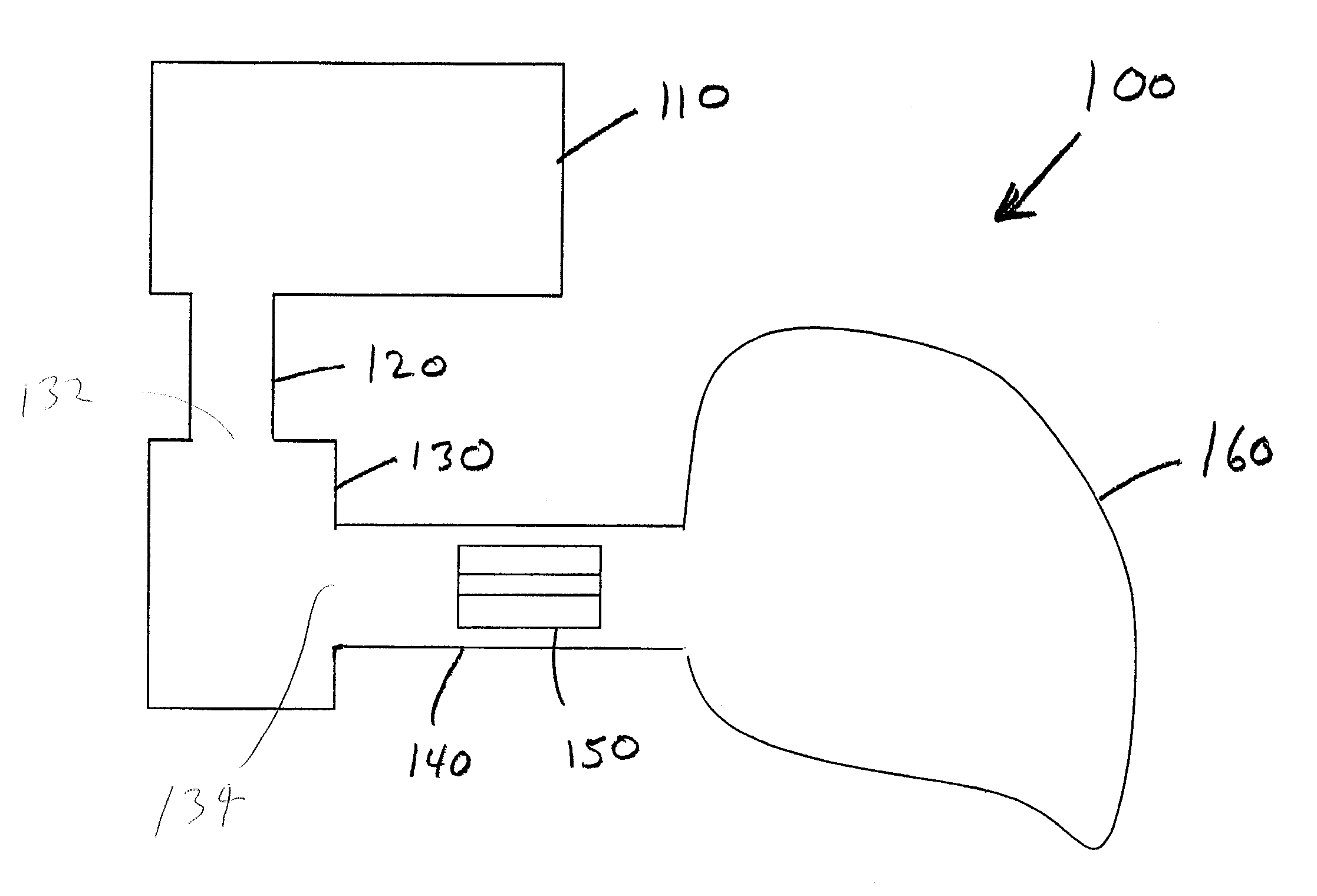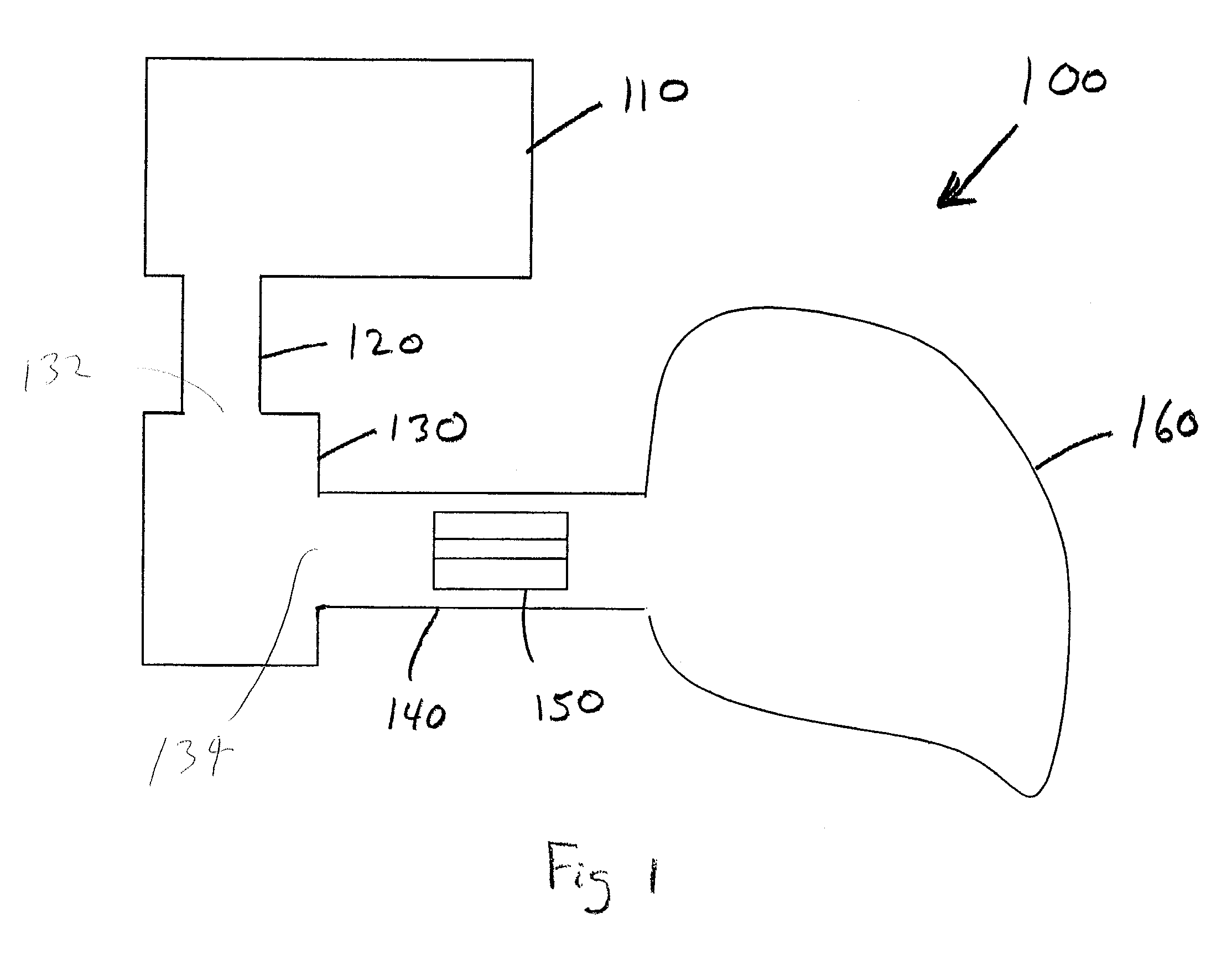High energy disinfection of waste
a waste and high-energy technology, applied in the field of waste disinfection, can solve the problems of reducing the effect of biological contamination
- Summary
- Abstract
- Description
- Claims
- Application Information
AI Technical Summary
Problems solved by technology
Method used
Image
Examples
Embodiment Construction
[0016]Referring first to FIG. 1, a system for treating a fluid waste generally comprises a source of waste 110, a waste line 120, a holding tank 130, a conduit 140, an RF plasma generator 150, and an body including treated waste 160.
[0017]Fluid waste encompasses any substantially organic fluid that is in need of disposal such as the waste from the human body and unwanted food. While fluid waste is likely to comprise at least some solid and semi-solid compositions, the solid and semi-solid compositions are insubstantial enough such that the waste is still able to flow through a conduit. In some cases, the assistance of a pump or similar device may be used to push or pull the waste through the conduit.
[0018]Fluid waste generally flows into a waste line 120 (e.g. a pipe from a toilet or a sink disposal) and then into a sewer or a holding tank such as a septic tank for a home or a holding tank of a vehicle. Ships, recreation vehicles, and airplanes are good examples of vehicles that hav...
PUM
| Property | Measurement | Unit |
|---|---|---|
| modulation frequency | aaaaa | aaaaa |
| pH | aaaaa | aaaaa |
| pH | aaaaa | aaaaa |
Abstract
Description
Claims
Application Information
 Login to View More
Login to View More - R&D
- Intellectual Property
- Life Sciences
- Materials
- Tech Scout
- Unparalleled Data Quality
- Higher Quality Content
- 60% Fewer Hallucinations
Browse by: Latest US Patents, China's latest patents, Technical Efficacy Thesaurus, Application Domain, Technology Topic, Popular Technical Reports.
© 2025 PatSnap. All rights reserved.Legal|Privacy policy|Modern Slavery Act Transparency Statement|Sitemap|About US| Contact US: help@patsnap.com


